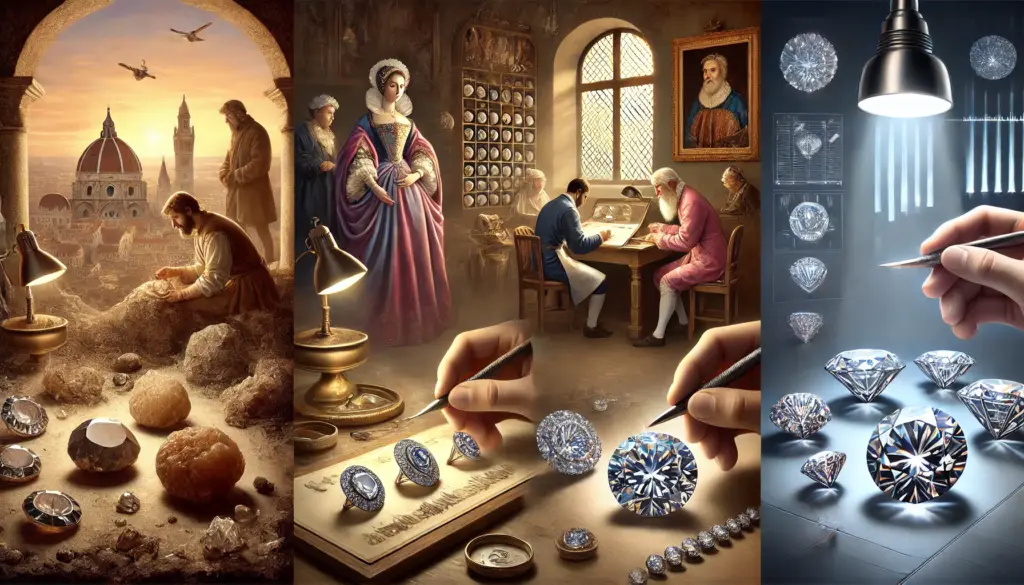
Diamonds are renowned for their unmatched brilliance, but that iconic sparkle is not solely a gift from nature. While diamonds are formed under extreme conditions deep within the Earth’s mantle, it is the artistry of human hands that reveals their full beauty. Over the centuries, diamond cutting techniques have evolved from rudimentary shaping methods to precise, technologically advanced processes, transforming raw stones into the breath-taking gems we admire today.
In ancient times, diamonds were revered for their strength and rarity, but the technology to properly shape them did not exist. Early jewellers relied on the natural form of diamonds, simply polishing the stones to enhance their inherent lustre. Because diamonds are the hardest known substance, attempts to alter their shape using primitive tools were largely ineffective. It wasn’t until the late Middle Ages, in the 14th and 15th centuries, that cutters discovered diamonds could be shaped by using their own dust. This breakthrough gave rise to the “point cut,” one of the earliest attempts to modify a diamond’s natural octahedral form, and marked the beginning of diamond craftsmanship.
The Renaissance period saw the introduction of more refined techniques and tools, leading to greater control over the cutting process. One pivotal innovation was the “table cut,” where the uppermost point of the diamond was flattened to create a table-like surface. This made diamonds easier to set in jewellery and enhanced their ability to reflect light. As demand for diamonds grew, especially among European royalty and aristocracy, cutters pushed the limits of their craft. The 17th century brought the “rose cut,” a design with multiple triangular facets that increased the stone’s brilliance, though still far less dazzling than what modern eyes are accustomed to.
The true revolution in diamond cutting arrived in the early 20th century, when Marcel Tolkowsky, a Belgian mathematician and diamond cutter, developed the “brilliant cut.” Tolkowsky’s calculations on the relationship between light refraction and angles led to a design that maximized the diamond’s fire, brilliance, and sparkle. With 58 precisely placed facets, the round brilliant cut became the gold standard, perfectly balancing light entering the diamond and reflecting it back to the viewer. This breakthrough set the foundation for modern diamond cutting and continues to influence the industry today.
In recent decades, technological advancements have taken diamond cutting to even greater heights. Lasers, 3D modelling, and computer-aided design now allow cutters to map out a diamond’s structure with incredible accuracy before a single cut is made. This ensures minimal waste, more refined designs, and greater brilliance. These tools also give artisans the ability to create complex shapes and patterns previously unimaginable. However, while technology plays a key role in precision, the final touches still often depend on the skills of highly trained cutters. Their experience and craftsmanship remain essential to coaxing the finest qualities from each individual diamond.
What began as a crude attempt to tame nature’s hardest substance has evolved into a sophisticated blend of art and science. The journey of diamond cutting, from the rough stones of ancient times to the radiant gems we see today, reflects not only the evolution of technology but also the unwavering human desire to capture and perfect beauty. Each new development in cutting methods has added another layer to this quest, transforming diamonds from simple symbols of wealth to intricate works of art. And as technology continues to evolve, the future promises even more dazzling innovations, ensuring that diamonds will continue to shine brighter than ever.

